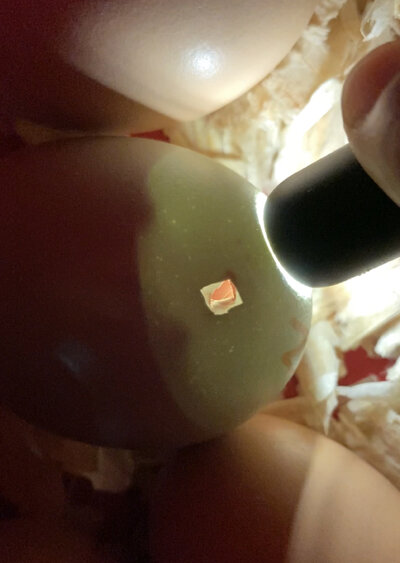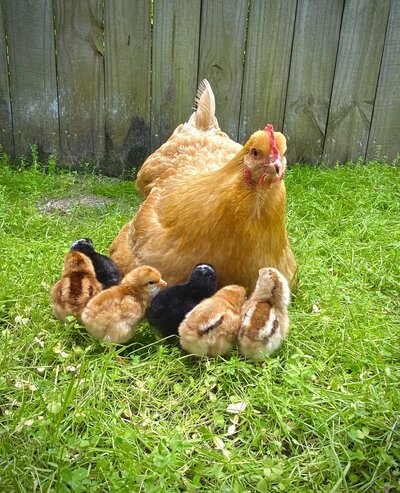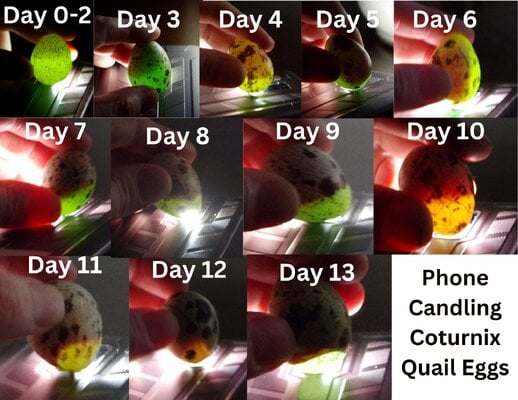Candling is important for...
eliminating the clears (day 5) no veins
eliminating quitters-(day 10) dark shadow in a small lump, no veins.
Of course your egg has 2 ends, large air cell end and the tip point end.
day 16 making sure the point is dark. Below is what you don't want to see. By day 16 the tip should be dark, if not the egg may still hatch, but would take more days in the incubator.

Day 18 you candle, and check if the eggs are ready for lockdown. An egg with clear point is not ready, like above,
but an egg with not enough slope, or some clear by the line of the slope, even if day 18 is not ready. See below...

The above egg is day 18 but does not have a slope and see the clear by the slope line.
The egg should be dark with slope large end, like below...

And then no candling after lockdown.
eliminating the clears (day 5) no veins
eliminating quitters-(day 10) dark shadow in a small lump, no veins.
Of course your egg has 2 ends, large air cell end and the tip point end.
day 16 making sure the point is dark. Below is what you don't want to see. By day 16 the tip should be dark, if not the egg may still hatch, but would take more days in the incubator.
Day 18 you candle, and check if the eggs are ready for lockdown. An egg with clear point is not ready, like above,
but an egg with not enough slope, or some clear by the line of the slope, even if day 18 is not ready. See below...
The above egg is day 18 but does not have a slope and see the clear by the slope line.
The egg should be dark with slope large end, like below...
And then no candling after lockdown.






